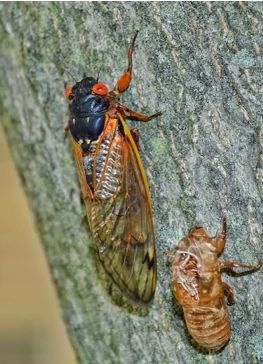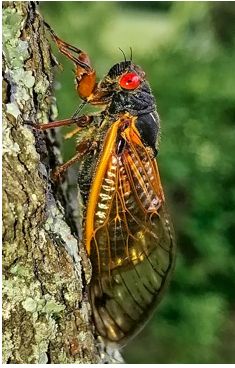It's not often the mating call of an insect can be just as loud as a jet plane landing at the airport.
What You Need To Know
- 17-year Cicadas will emerge in mid-May in southern Ohio
- They can be just as loud as a plane landing
- They are good for the environment
- They won't bite or sting and live for only six weeks
We're talking about Brood X, the largest of the 17-year cicadas brood, and they will show up in 15 different states in a few weeks.
If you remember Brood X's last emergence in 2004 and you are not looking forward to it this year, you should know a few things about these cicadas.
I talked to Dr. Gene Kritsky, the Dean of Behavioral & Natural Sciences at Mount St. Joseph University in Cincinnati.
He and the university created a free app called Cicada Safari.
This is a way for people to track, map and share photos and videos of the cicadas.

"The cicadas are expected to start emerging in early May in the southern states, in mid-May in southern Indiana and Ohio, and a week later in northern Indiana, Maryland, Pennsylvania and New Jersey," said Dr. Kritsky.
Cicadas are good meteorologists. They will emerge when the soil temperature is 64 degrees and often after a soaking rain.
They look a little scary so let's find out if these creatures are good or bad?

1) They are loud, but how long do they live?
Dr. Kritsky: Those that are not eaten by predators may live up to a month. It takes about two weeks for most of the cicadas to emerge, the event will last about 6 weeks.
2) Do they have a positive impact?
Dr. Kritsky: Yes. Periodical cicada years are quite beneficial to the ecology of the region. Their emergence tunnels in the ground act as natural aeration of the soil.
Numerous adult cicadas provide a food bonanza to many predators, which can have a positive impact on their populations. The females’ egg-laying in trees is natural pruning of the trees that results in the tree producing more flowers and fruit in the following year.
Finally, after the cicadas die, their decaying bodies contribute a massive amount of nitrogen and other nutrients to the soil.
3) Do they bite or sting?
No. They are not harmful to humans.
Even with the positive impact on the environment, Dr. Kritsky says some people find them a nuisance and even reschedule outdoor events.
Two things to remember if you find yourself turning up the TV to drown out the noise: They will only be around a short time and it will be another 17 years before they return.



)